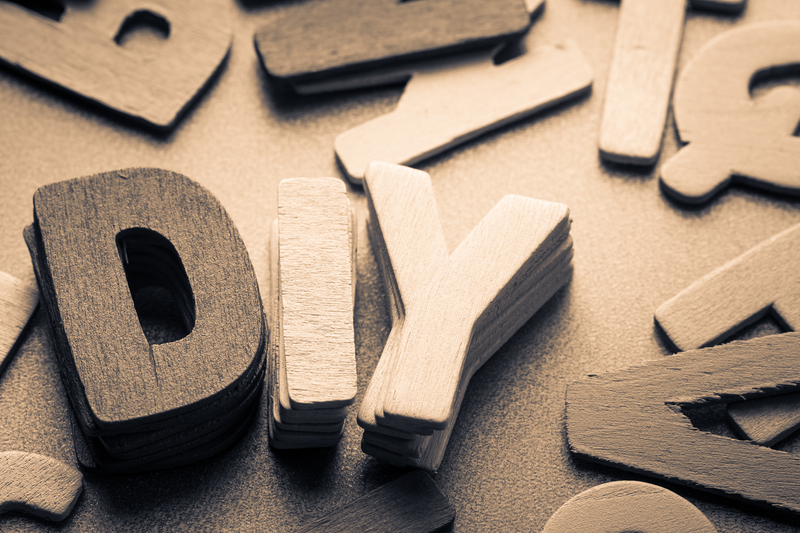Where to Drop Off Unwanted Pots and Pans for Recycling
If your cabinets are overflowing with old pots and pans, you might be wondering: where to drop off unwanted pots and pans for recycling? With sustainability being more important than ever, recycling cookware can help reduce landfill waste and promote a greener environment. This comprehensive guide will discuss practical locations, methods, and tips to properly recycle old saucepans, frying pans, stockpots, and more. Whether your kitchenware is non-stick, stainless steel, aluminum, or copper, you'll find a detailed answer here.

Understanding Why Pots and Pans Should Be Recycled
Pots and pans are usually made from metals that don't belong in your household trash. By recycling them, you help conserve resources, decrease pollution, and support the production of new goods. Most local waste management services, however, do not collect cookware alongside regular recyclable items due to the composition of metals, coatings, and handles. Below, learn how to responsibly dispose of or recycle all types of kitchen pots and pans.
What Types of Cookware Can Be Recycled?
- Stainless Steel Pots and Pans: Highly recyclable at scrap metal yards.
- Aluminum Pans: Accepted by most metal recyclers.
- Copper Cookware: Valuable and easily recycled at specialized centers.
- Cast Iron Skillets: Can be left at scrap yards or refurbished.
- Non-stick (Teflon-coated) Pans: Sometimes accepted if non-stick coating is removed, but often rejected--check with your local recycler.
Pro Tip: Always check pans for plastic handles and glass lids, which may need to be removed before recycling the metal base.
Best Places to Drop Off Unwanted Pots and Pans for Recycling
1. Local Scrap Metal Yards
Scrap metal yards are the top choice for recycling old cookware. They accept most types of metal pots and pans, often giving you a small cash payment based on weight.
- Search Google for "metal recycling near me" or "scrap yard drop-off" locations.
- Preparation: Remove all non-metal parts such as handles or lids.
- Bring your unwanted pots and pans during the facility's operating hours.
- Some metal recyclers accept small kitchen appliances and accessories as well.
2. Municipal Recycling Centers
Many municipalities operate drop-off centers that accept large and bulky items made of metal, including old pots and pans for recycling.
- Check your city's website for recycling center locations and policies.
- Some centers run special metal-recycling collection days each year.
- Verify if they accept all metal cookware or just certain types (e.g., no non-stick coatings).
3. Thrift Stores and Donations
If your cookware is still usable, consider donating before recycling. Donation centers and thrift stores often accept pots and pans, providing them with a second life instead of ending up as waste.
- Goodwill, Salvation Army, and Habitat for Humanity ReStores frequently accept kitchenware.
- Call ahead to make sure the items are in acceptable condition.
- Donations are a great way to help others while keeping items out of landfills.
4. Retailer Take-Back and Recycling Programs
Certain retailers occasionally offer trade-in or recycling programs for old kitchen pots and pans--usually when you buy a new set.
- Retailers such as Bed Bath & Beyond, Williams Sonoma, and Sur La Table may occasionally host recycling events.
- Some cookware brands operate return programs for worn-out products. Check with manufacturers like Calphalon, All-Clad, or Tefal for up-to-date information.
5. Eco-Conscious Waste Management Services
Privately operated waste haulers in some areas handle specialty recycling for household metals like old cookware.
- Research services such as 1-800-GOT-JUNK or local junk removal companies.
- Some will sort metals and send them to proper recycling centers instead of landfills.
- Compare prices, as these services may charge for pick-up and disposal.
Special Considerations for Different Types of Pots and Pans
How to Recycle Nonstick Pots and Pans
Most recycling centers and scrap yards do not accept nonstick cookware with Teflon or ceramic coatings. That's because the coating can contaminate the metal recycling process.
- Option 1: Remove the handle and sand down the coating, exposing the metal underneath (ask your local scrap yard if this is required).
- Option 2: Donate usable nonstick items to thrift stores or shelters if they are in good condition and not damaged.
- Option 3: Check for specialized recycling events hosted by kitchenware retailers that accept nonstick pans.
Charity and Upcycling for Cast Iron and Stainless Steel
- Refurbish: Many cast iron pans can be restored by re-seasoning. Consider giving them away via community groups or online marketplaces.
- Donation: Charities, shelters, and community kitchens often need sturdy kitchen equipment.
- Upcycle: Old pans can be turned into garden planters, wall art, or rustic decorations.
What to Do Before Dropping Off Your Pots and Pans
- Check for Condition: If a pan is in working order, donate before you recycle.
- Clean Thoroughly: Remove food, grease, or debris.
- Disassemble When Possible: Remove plastic or rubber parts, handles, and lids.
- Check Local Policies: Always ensure your drop-off location can process your specific type of cookware.
Step-by-Step Guide: How to Prepare Pots and Pans for Recycling
- Sort the Items: Group by material (aluminum, steel, copper, etc.).
- Remove Non-Metal Parts: Use a screwdriver or pliers to detach handles and knobs.
- Clean Thoroughly: Rinse off any remaining residue for sanitary and recycling purposes.
- Contact Your Chosen Drop-off Location: Double-check their requirements for acceptance.
- Transport Safely: Place cookware in sturdy boxes or bags for delivery to the facility.
Online Tools for Locating Cookware Recycling Drop-Off Locations
- Earth911 Recycling Search lets you find local recycling centers by typing "cookware," "pots," or "pans" and your ZIP code.
- Call2Recycle and local government recycling pages can also provide up-to-date guidance.
- Google Maps: Search for "scrap metal center near me" or "recycle pots and pans near me" for fast results.
Frequently Asked Questions About Pots and Pans Recycling
Can You Put Pots and Pans in the Curbside Recycling Bin?
No. Most municipal curbside pickup programs do not accept pots and pans, even if they are made of metal. The metals, coatings, and sizes can jam sorting equipment and cause contamination.
Does Nonstick Coating Make a Pan Unrecyclable?
It depends. Pure aluminum, steel, or cast iron pans without nonstick coatings are widely accepted. Pans with coatings often require removal of the surface before acceptance by scrap yards--confirm with your drop-off location first.
Can Pots and Pans Be Donated Instead of Recycled?
Absolutely! If your pans don't have deep scratches, cracks, or delamination, donation to charity shops, shelters, or online platforms is encouraged for reuse.

Tips for Responsible Pots and Pans Disposal
- Check With the Manufacturer: Some brands offer mail-in recycling or trade-in programs for their products.
- Stay Informed About Community Events: Local recycling drives often accept hard-to-recycle items like cookware for a limited time.
- Be Resourceful: Upcycling or passing on usable items via neighbors, local Buy Nothing groups, or donation platforms (e.g., Freecycle, Facebook Marketplace).
Conclusion: Go Green by Recycling Your Unwanted Pots and Pans
Recycling unwanted pots and pans not only clears space from your kitchen but also helps foster a healthier environment. From scrap metal yards to charity donations or retailer programs, you have a variety of options for responsible disposal or recycling. Remember to prepare your cookware correctly and confirm drop-off requirements before your visit. By acting thoughtfully, you contribute to a circular economy and sustainable future. Start your journey today and inspire others in your community to recycle pots and pans the right way!